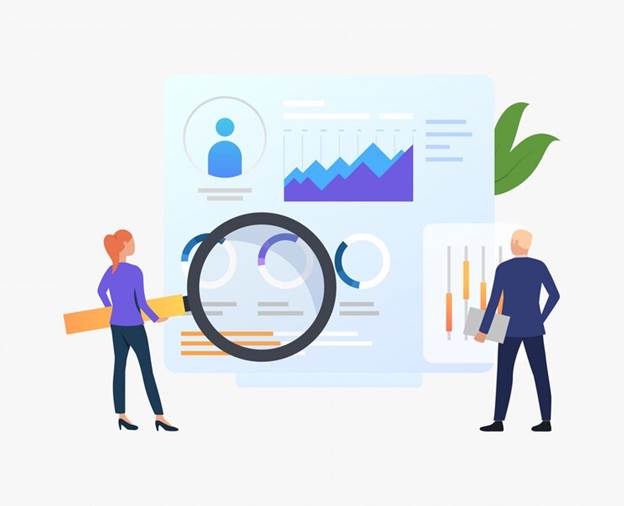72% of employers in North America wish to support their employees with career development. However, only 31% state that they have employee performance management solutions to address this. Further, for 93%, improving the performance of their organisation is essential, though only 44% have a performance management program to address this. While the figure might not be the same for the UK and Europe, the facts still hold true.
To address this gap, a software-based Employee Performance System is a step in the right direction.
Basics of Performance Management Systems

Tracking and monitoring the performance of each employee is key in an organisation. This task is accomplished with the help of an Employee Performance System. According to the Harvard Business Review, 70% of MNCs are showing a shift to this form of appraisal system.
Categories of Employee Performance Systems
To evaluate how well an employee is performing, one of the two below approaches can be taken:
● Organisational Employee Performance Systems
Here, the prime focus is to ensure that the way an employee performs and the targets they meet align with the goals of the company as a whole. Thus, this system looks at teams as a whole instead of just individuals.
Under this employee performance system, the four main steps in performance management are

These help define objectives to achieve, create a scorecard for employees to evaluate them against, and sort employees into groups based on their performance.
● Individual Employee Performance System
Also called HR performance management, this helps evaluate workers at an individual level. Further, it involves setting KPIs (Key Performance Indicators) for everyone to assess them. These may include performance as well as behavioural indicators that can be tracked using metrics.
What Makes Performance Management Systems Important
Consistency, data-driven decisions, and transparency are key during appraisals. Further, it is important to track employees at every stage to get a better overview of their performance.
Thus, having a performance management system makes it easy to address the following:
- Decision-making process when it comes to promotions, incentives, and even layoffs.
- Guiding employees regarding tasks that they need to achieve.
- Creating tailor-made training programs to suit the workers and the organisation.
- Improved periodic assessment process.
- Effective retention policies for employees.
- Employee engagement and effective communication at all stages.
- Effective leadership training and succession planning process.
- Streamline the goal-setting system and align these with career development plans.
Traditionally, performance management and appraisals have taken one of the two forms:
- Either the managers/ team leaders had an annual meeting with individual employees,
- Or, they sent in appraisals and reviews without an employee consultation.
In both cases, the scope for bias is high. Further, metrics were tracked using spreadsheets, making it a time-consuming and error-prone process. To address this, software-based employee performance management solutions were developed.
Why are Software-Based Employee Performance Management Solutions Essential
A robust, bias-free system is the need of the hour. Further, employees feel heard when they have a role to play in their performance appraisals. According to Gallup, employee engagement receives a 70% boost while turnovers reduce by 14.9% with proper employee performance management solutions.
To save time and address the above, having employee performance management solutions is essential. Using this, you get to enjoy the following:
- Getting data and insights regarding every employee and metric.
- Improvement in the frequency and quality of feedback.
- A fair performance management and appraisal process.
- Being able to track the performance of every employee.
- Identifying the training and skill gaps of every employee.
- An automated monitoring and reporting system.
The above helps establish transparency in a rating or appraisal system, build succession plans, allocate incentives, and create new development plans.
Do Employee Performance Management Solutions Have Different Stages and Elements?

The answer is a resounding yes on both accounts. No matter the employee performance management solution you deploy, there are always a few key elements that help drive the benefits. Further, to be deployed in an effective manner, the entire process should move in a cyclic manner involving the below:
● The Performance Management Policy
Prima facie this needs to be established. By selecting a particular approach or policy you can decide which indicators and categories to use for the employee performance management solution.
● Target Setting
Alongside each category, mention the set targets. These will vary as per the job role. Further, assign assessment metrics for each of these.
● Tracking Progress
Using these metrics, track the progress each employee is making. Further, this should be a continuous process so that it can yield real-time data and results.
● Appraisals
While monitoring is continuous, appraisals are not. Since these take place 1-2 times a year, data from the employee performance system can be curated for this.
● Providing Feedback
After the appraisal, employers/ managers/ team leaders can provide feedback such that employees can learn and improve.
● Creating Development Plans
Using this feedback and inputs from the employee performance system, employees as well as HRMs can map out career plans for the future.
● Strategy for Rewarding Employees
An added step, employees who successfully achieve their targets and do more can be rewarded in the form of incentives and bonuses. The value for these can be set using the data from the employee performance system.
Best Practices Regarding Employee Performance Systems
It is not always smooth sailing, once you develop and deploy an Employee Performance System for your organisation. However, to achieve the same, you can try using the below best practices:
- Know the pros and cons of every system before you deploy them.
- Evaluate which systems are working for you and the ones that aren’t.
- Use an approach that suits the role – behavioural, target based, or a mix of both.
- Alter it to work for hybrid and remote workers.
- Train the team and the managers so that everyone knows how to use the system.
- Set SMART (Specific, Measurable, Achievable, Realistic, Time-bound) goals to make the system more trackable.
- Make sure the monitoring process is continuous instead of just annual or half-yearly.
- Leverage the top HR technology available in the market.
- Guide your workers and enable them to create their own development plans.
To Conclude
While employee performance management solutions come in many forms, it is best to use an AI-driven version that aligns with your company and its goals. Further, for easier adaptation, the metrics and performance indicators provided by the software should match the ones in use.
Evaluate the top employee performance systems available and choose one that suits your organisation. Be sure to train your team on how to use the system. Once deployed effectively, you can enjoy the benefits of a streamlined evaluation and appraisal system.



